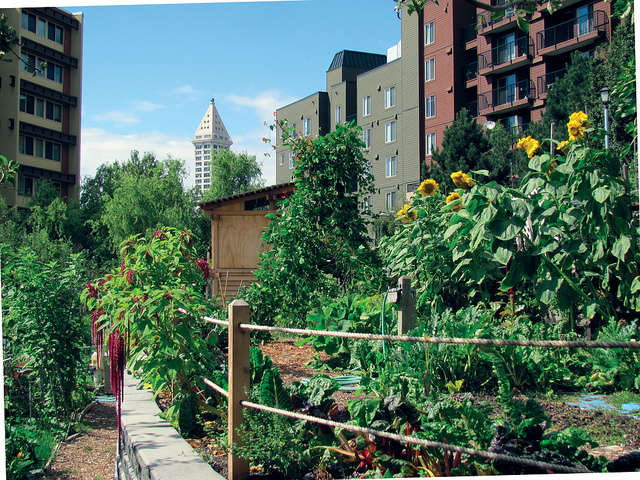Getting The City Blooming To Work
Table of Contents7 Simple Techniques For City BloomingThe Only Guide to City BloomingCity Blooming Can Be Fun For EveryoneTop Guidelines Of City BloomingThe 9-Second Trick For City Blooming
Fascinated in expanding food for sale in the City of Chicago? Below is a listing of often asked questions relating to the policies and policies that cultivators ought to think about when planning a metropolitan farming job.
The zoning change does not customize any other codes managing composting, structure authorizations, purchasing or leasing City possessed residential property, business licenses or ecological contamination. There are existing codes that manage these issues and they remain completely effect and may be appropriate to your job. Area yards are usually owned or taken care of by public entities, public organizations or community-based organizations and maintained by volunteers.
Urban ranches expand food that is meant to be sold, either on a nonprofit or for-profit basis. Because of their industrial function, urban ranches need an organization license. Yes. A neighborhood garden is permitted to offer surplus generate that was grown on site if the sales are accessory or secondary to the garden's main objective defined above.
City Blooming - An Overview
Composting is permitted yet just for plant material that is created and utilized on site. The quantity of garden compost material can not surpass 25 cubic backyards at any offered time according to the standards in 7-28-715 of the City's Municipal Code. Yes. Since the dirt at a lot of new yard websites requires amending, compost, dirt, timber chips, or various other products can be acquired to construct or improve the expanding area - sustainable gardening.

If a building permit is needed after that the hoophouse will be taken into consideration an accessory building. You can learn more regarding the structure license demands by contacting the Department of Structures. The 25,000-square-foot dimension limitation is intended to avoid a solitary neighborhood yard from controling a given block or detracting from the block's existing residential or industrial character.
The limit does not apply to yards found in Public Open Space (POS) areas. Can there be even more than one neighborhood garden that is 25,000 square feet on a solitary block? Fencing is not called for, however, gardens that have large parking locations may be needed to set up fencing or various other landscape design features.
8 Simple Techniques For City Blooming
B1 & B2 areas call for that all commercial usage activities be conducted indoors. Is secure fencing needed for urban farms? Fences may be needed, along with landscaping and screening, for particular vehicle parking areas and outside work or storage areas depending on area and the specific activity taking place.
Yes. Urban ranches require structure permits and zoning authorizations prior to construction. Other forms of city evaluation might be called for relying on certain frameworks, tasks, dimension, landscape design, discover this licensing, public health and stormwater administration issues. Much of these demands are determined in the project style or allowing process, however, the applicant might be accountable to separately identify particular licenses or permits that may be called for.
Yes. The sort of license is figured out by what is taking place at the website. The Department of Organization Matters and Consumer Defense can aid figure out the particular type of service permit that's needed. Yes. Off street car park is needed for many business tasks in Chicago. The needed variety of garage is based on the number of staff members working with website and not the square video footage of the growing area.
The smart Trick of City Blooming That Nobody is Talking About

Yes. A metropolitan ranch can market compost material created on site, nonetheless, the operation must follow the laws in 7-28-715 of the Chicago Municipal Code. Yes. Aquaponic systems are allowed inside your home on urban farms in numerous zoning areas. A zoning review and structure license is needed in order to mount frameworks or systems and a company certificate is called for as explained over.
As much as five hives or swarms of honey bees may be maintained as an accessory usage. Beekeepers should sign up with the Illinois Department of Agriculture. For more details concerning the suggested zoning modification you might contact the Department of Real Estate and Economic Advancement, Bureau of Planning and Zoning at 312.744.8563.
Farming in cities and city areas A metropolitan farm in Chicago. Urban agriculture describes various techniques of growing. https://trello.com/u/cityblooming, processing, and dispersing food in metropolitan areas. The term likewise uses to the location activities of animal husbandry, tank farming, beekeeping, and horticulture in an urban context. Urban farming is differentiated from peri-urban agriculture, which happens in country areas at the side of residential areas.
City Blooming Things To Know Before You Buy
It can include a motion of natural farmers, "foodies" and "locavores", who look for to create socials media established on a common ethos of nature and neighborhood holism. These networks can create by method of formal institutional support, coming to be integrated into local town as a "transition town" motion for sustainable urban development.
The a lot more direct accessibility to fresh vegetable, fruit, and meat items that may be become aware through urban agriculture can boost food security and food safety and security while decreasing food miles, causing reduced greenhouse gas discharges, consequently adding to environment modification mitigation. Some of the initial evidence of city agriculture comes from Mesopotamia.